Explore “Wh” questions.
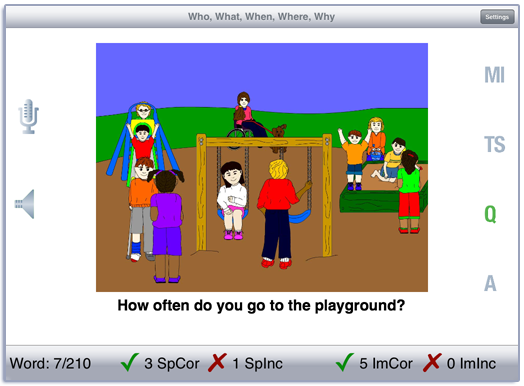
To correctly answer a question a child must first determine what kind of question was asked. For some questions, they must also understand the underlying inference that the question is making. Many children can identify and answer the direct “Wh” questions such as "Who teaches a class?" but cannot answer, "How will he know what kind of robot to build?" To assist the child in developing the inference skills necessary to answer the question, we provide a picture, Main Idea (MI button), and Topic Sentence (TS button).
Listen to the Main Idea (usually just a word) and the Topic Sentence. Discuss how they relate to the picture. This gets the child focused on the details of the picture so that they can more accurately answer the question. Then listen to the Question (Q button). We provide an answer to the question, but our answer is just one of many possible answers. Other answers that the child gives can still be scored as correct. Disagreeing with the answer is also encouraged to demonstrate that different people see the same question and may answer it differently.
The purpose of the exercise is to pay attention to what kind of question is being asked, think about the situation, then answer the question.
The record and playback feature allows the child to record their answer and see if it makes sense to them when they hear it played back. Can they determine if they answered the right kind of question? Was their answer correct?
Get Who, What, When, Where, Why at the App Store for $4.99
Explore language while learning about critters.
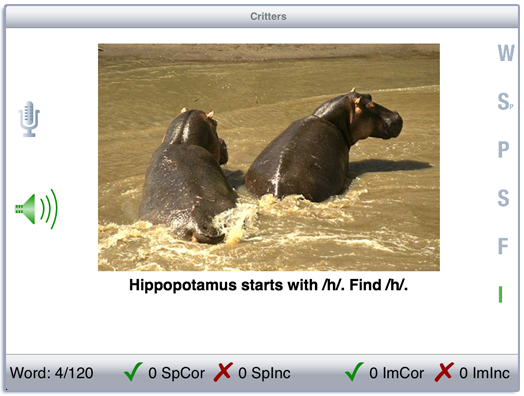
Parents will find “Critters” to be a fun way to teach children new vocabulary, ask and answer questions, and practice great articulation.
Learn about animals from many different habitats: house, farm, forest, ocean, jungle, grasslands, the arctic and more!
Listen to the word by tapping on the Word button or on the picture, then use the record button to record your voice.
The Parentese button will provide a model that a parent might use with a very young child. For a longer model the child can tap on the descriptive buttons–Phrase, Sentence, or Functional Sentence.
Get Wild, Woolly, Wonderful Critters at the App Store for $1.99
Explore language while learning about critters.
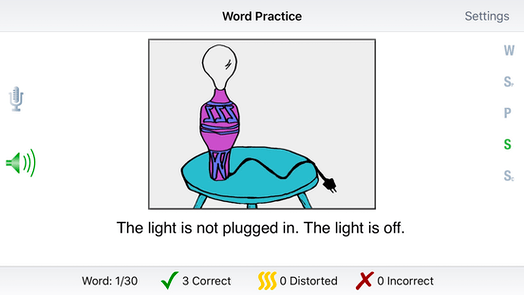
Is your child speaking in single words but having trouble with simple phrases and sentences?
Word Practice provides a model for step-by-step transition to full sentences. Colorful drawings or photos are presented in three categories: Common Verbs, Contrast Words like “over/under”, and Animals.
A clear speech model is presented for the child to imitate and they can record and play back their own speech. The clinician can choose from three scoring methods. 1. Score each response as correct, distorted or incorrect. 2. Score responses as correct, distorted, substituted, or omitted. 3. Score productions based on whether they are spontaneously correct/incorrect or imitatively correct/incorrect. SLPs will appreciate that this activity models more complex grammar and syntax for imitation.
This app uses the content from the Word Practice game from LocuTour’s Look! Listen! and Learn Language CD.
Get Look! Listen! Learn Language! at the App Store for $4.99
Ask and answer direct questions with a train theme.
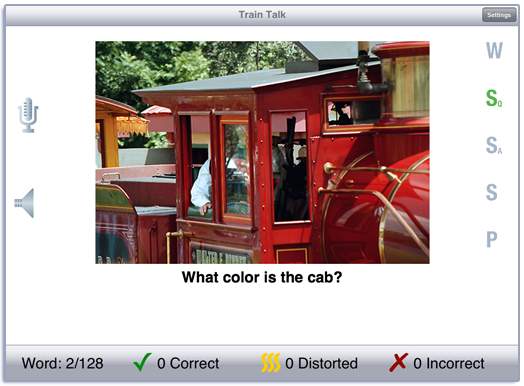
Train Talk! is for children who love to talk about trains. This app helps direct their conversation toward learning to ask and answer “Wh” questions. There are 128 pictures with question prompts and sample answers to encourage turn taking, spontaneous speech, conversational skills, and auditory comprehension. Who knew train talk could be so much fun!
Get Train Talk! at the App Store for $4.99
Thousands of pictures at your fingertips—3,328 to be exact.
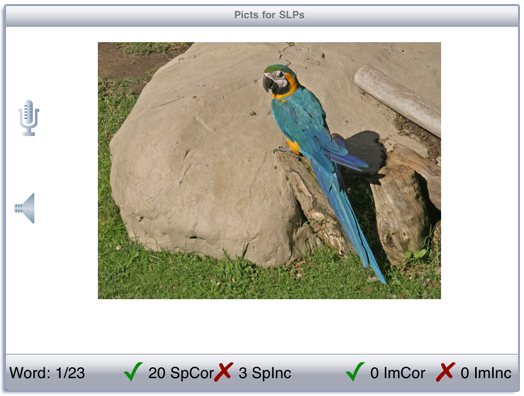
Pick pictures that match the interests of the child you are working with. There are 11 major categories like Plants, People, and Places. Within each category, there are sub-categories like Body Parts, Working, Playing, Airplanes, Trains, etc.
If you have a child who is fascinated by trains or planes, you can pick photos that will keep their interest. If you are working on expressive language skills, pick a category that they can relate to and ask the child to describe the actions in the picture. Can they imagine eating the food or petting the bunny?
You may change the text prompts to develop receptive and expressive language skills, articulation, word retrieval, pragmatics, voice, fluency, and more. If you have iOS7 or greater, the iDevice will speak the text for you.
Get Pictures for SLPs and Special Education Teachers at the App Store for $4.99